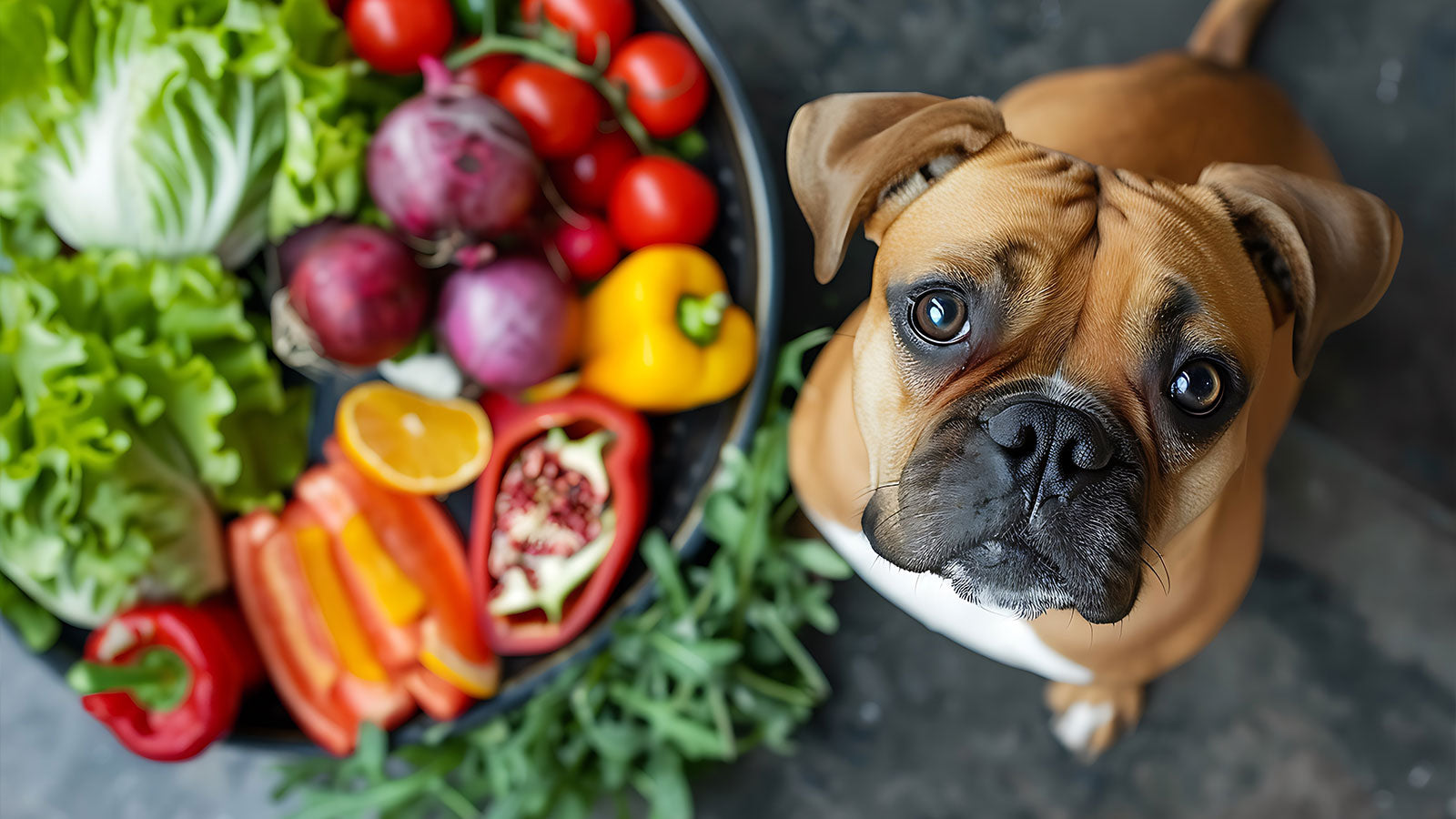As dog owners, we constantly seek the best for our furry companions, from the most comfortable beds to the healthiest foods. While the debate on what constitutes a perfect diet for dogs is ongoing, one thing is clear: vegetables can play a vital role in ensuring your dog’s health and well-being.
This article explores the numerous reasons why incorporating vegetables into your dog’s diet is not just beneficial but essential.
1. Nutrient-Dense Superfoods
Vegetables are packed with essential vitamins, minerals, and antioxidants that can significantly contribute to your dog's overall health. Just like humans, dogs need a variety of nutrients to thrive. Vegetables such as carrots, spinach, and broccoli are rich in vitamins A, C, and K, which support everything from vision to immune function. These natural sources of nutrients can often surpass the benefits provided by synthetic supplements.
2. Improved Digestion and Gut Health
Fiber is a crucial component of a dog’s diet, and vegetables are an excellent source of it. Fiber aids in digestion by regulating bowel movements and preventing constipation. A diet rich in fiber can also reduce the risk of gastrointestinal disorders and help maintain a healthy gut microbiome. Adding vegetables like pumpkin and sweet potatoes to your dog’s meals can promote regularity and ease digestive issues.
3. Weight Management and Obesity Prevention
Obesity is a growing concern among pets, leading to numerous health issues, including diabetes, joint problems, and heart disease. Vegetables are low in calories but high in fiber, making them a perfect addition to your dog’s diet to help manage weight. Replacing some high-calorie treats with vegetable snacks like cucumber or green beans can keep your dog full and satisfied without packing on extra pounds.
4. Enhanced Hydration
Many vegetables have a high water content, which can contribute to your dog’s overall hydration. Hydration is essential for maintaining healthy skin, coat, and organ function. Vegetables like cucumbers and zucchini can provide an additional source of water, especially during hot weather or if your dog isn’t drinking enough on its own.
5. Reduced Risk of Chronic Diseases
Vegetables are rich in antioxidants, which play a vital role in neutralizing free radicals and reducing inflammation. Chronic inflammation is a leading cause of many diseases, including cancer, arthritis, and cardiovascular issues. By incorporating antioxidant-rich vegetables like kale and spinach into your dog’s diet, you can help lower the risk of these chronic conditions and support long-term health.
6. Better Oral Health
Chewing on raw vegetables can help clean your dog’s teeth and massage their gums, reducing the buildup of plaque and tartar. Vegetables like carrots and celery are particularly beneficial for this purpose. Additionally, the natural enzymes found in some vegetables can help maintain a healthy balance of bacteria in the mouth, further supporting oral hygiene.
7. Support for Detoxification
Detoxification is the process by which the body removes toxins, and certain vegetables can support this process in dogs. Cruciferous vegetables like broccoli and Brussels sprouts contain compounds that aid in liver function and detoxification. By including these vegetables in your dog’s diet, you can help their body eliminate harmful substances more efficiently.
8. Allergy Relief
Dogs, like humans, can suffer from food allergies, often triggered by common protein sources or grains. Introducing vegetables as a part of your dog’s diet can provide hypoallergenic alternatives that reduce the risk of allergic reactions. Vegetables such as sweet potatoes and peas are gentle on the stomach and less likely to cause allergies, making them an excellent choice for dogs with food sensitivities.
9. Improved Energy Levels
Vegetables are a natural source of carbohydrates, which are essential for providing energy. Unlike refined grains that can cause spikes in blood sugar, the complex carbohydrates found in vegetables are digested slowly, providing a steady release of energy throughout the day. This can help keep your dog active and energetic without the risk of energy crashes.
10. Enhanced Flavor and Variety
Dogs, just like humans, can become bored with the same food day after day. Adding a variety of vegetables to your dog’s meals can enhance the flavor and provide new textures that make eating more enjoyable. Whether you steam, roast, or serve them raw, vegetables can add excitement to your dog’s diet, ensuring they look forward to mealtime.
Incorporating Vegetables Into Your Dog’s Diet
Now that we’ve explored the many benefits of feeding vegetables to your dog, you might be wondering how to start. It’s important to introduce vegetables gradually, especially if your dog isn’t used to eating them. Start with small portions and monitor your dog’s reaction, both in terms of enjoyment and digestion. You can serve vegetables raw, steamed, or lightly cooked, but avoid adding any seasoning or oil that could upset your dog’s stomach.
When choosing vegetables, opt for organic produce whenever possible to avoid pesticides and chemicals. It’s also important to note that not all vegetables are safe for dogs. For example, onions, macadamia nuts, and certain mushrooms can be toxic to dogs, so always do your research or consult with your veterinarian before introducing a new vegetable into your dog’s diet.
Conclusion
Feeding vegetables to your dog is a simple and effective way to enhance their diet and overall health. From providing essential nutrients and aiding in digestion to preventing chronic diseases and supporting weight management, the benefits are numerous. By carefully selecting and preparing the right vegetables, you can ensure that your dog enjoys a varied, nutritious diet that contributes to a long and healthy life.
Remember, every dog is unique, so it’s essential to tailor their diet to their specific needs and preferences. With the right approach, vegetables can become a staple in your dog’s diet, offering a natural, wholesome boost to their well-being.






Share:
A Novel Protein Diet for Your Pet: What You Need to Know
Feeding Eggs: Benefits, Risks and Best Practices